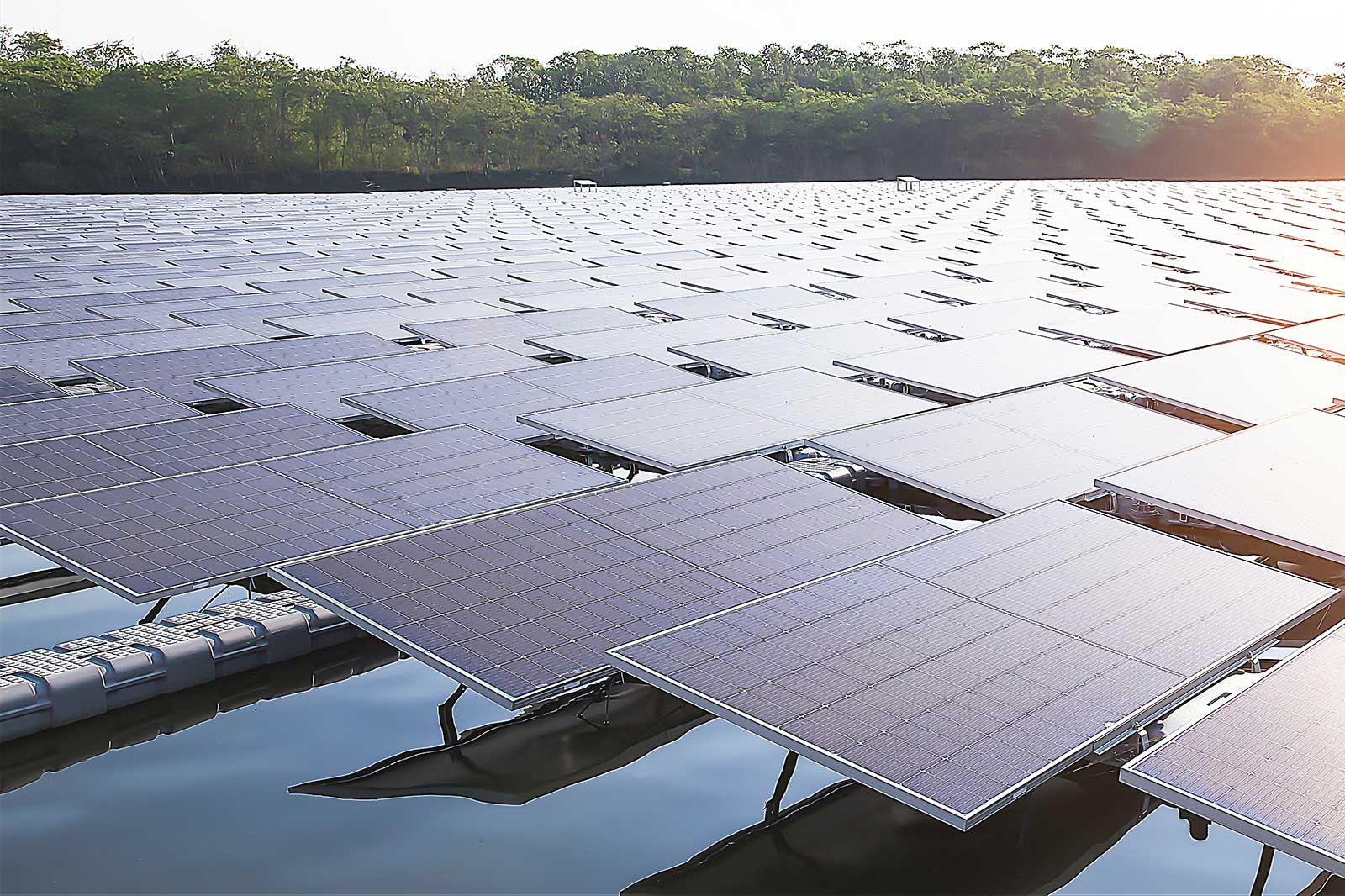Floating photovoltaics means floating solar plants on lakes and other bodies of water. The technology enables energy companies to expand solar power without taking up more land. In 2021, the installed capacity worldwide was significantly above two gigawatts and counting, according to the Fraunhofer Institute for Solar Energy Systems (ISE). Floating PV plant technology has enormous potential for generating energy and protecting the climate – potential that has barely been tapped into yet. In contrast to ground-mounted solar panels, PV modules are installed on floating structures and operate on a body of standing water or the sea.
Ground-mounted solar farms need plenty of space. In densely populated areas with a high energy demand, floating PV technology could provide the decisive advantage in the expansion of renewables. In Europe, and particularly in Germany, there are many artificial water bodies that fulfil the technological requirements for floating PV. According to a study by Fraunhofer ISE, 500 lakes at former opencast mining sites alone have a useful potential in the two-digit gigawatt range.


